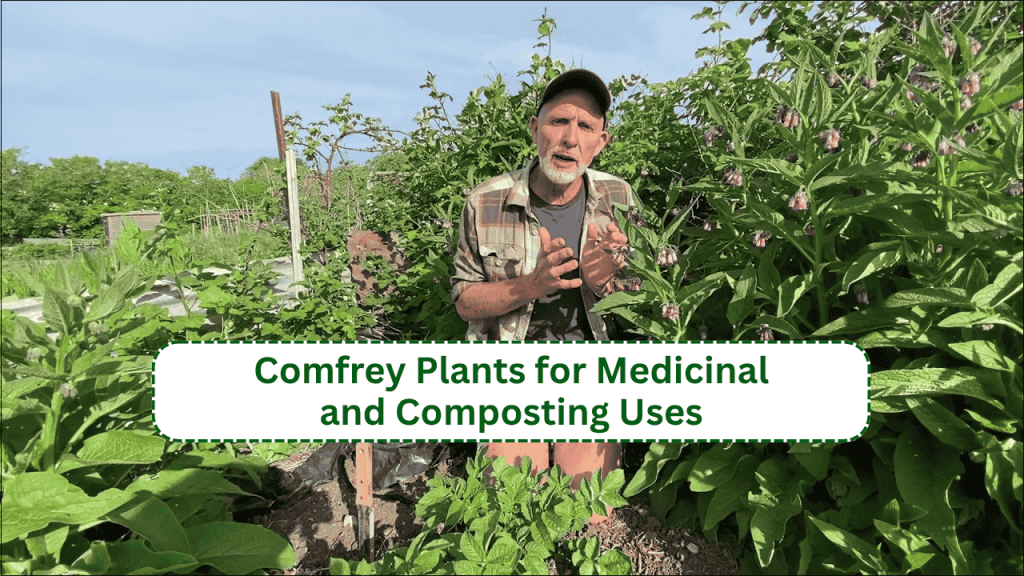
Comfrey stands as one of the most versatile and valuable plants in both organic gardening and traditional herbal medicine. This remarkable perennial has earned its reputation through centuries of use, combining exceptional medicinal properties with outstanding ability to enhance soil fertility and composting processes. Known for its rapid growth, deep-reaching roots, and nutrient-dense leaves, comfrey offers gardeners and herbalists a dual-purpose plant that enriches both garden ecosystems and natural healing practices.
The extraordinary value of comfrey lies in its unique composition—leaves packed with potassium, nitrogen, and calcium that make it perfect for creating compost teas and soil enrichment programs. In herbal healing traditions, comfrey has been treasured for external applications, particularly for soothing bruises, sprains, and promoting tissue repair through its high allantoin content. This comprehensive guide explores eight outstanding comfrey varieties that excel in both medicinal applications and composting value.
Table of Contents
Understanding Comfrey’s Dual Nature
Comfrey’s effectiveness stems from its deep taproot system that can extend several feet into the soil, mining valuable minerals and nutrients from depths beyond the reach of most plants. This unique characteristic makes comfrey an exceptional dynamic accumulator, concentrating essential nutrients in its leaves that can then be harvested and returned to the garden through composting or direct application as green manure.
The medicinal properties of comfrey center around allantoin, a compound that promotes cell regeneration and healing. However, it’s important to note that modern herbal practice recommends comfrey for external use only due to compounds that may pose risks with internal consumption.
Complete Guide to Comfrey Varieties
1. Common Comfrey (Symphytum officinale)
The foundational variety in comfrey cultivation, Common Comfrey represents the gold standard for both medicinal and gardening applications. Its distinctive bell-shaped flowers range from purple to cream, creating attractive displays from late spring through early summer while attracting beneficial pollinators to the garden.
Medicinal Value: Highest allantoin content among varieties, making it most potent for external healing applications Composting Benefits: Large leaves decompose rapidly, providing quick nutrient release Growing Requirements: Thrives in moist, well-drained soil with partial shade tolerance
2. Russian Comfrey (Symphytum × uplandicum)
This vigorous hybrid variety has become increasingly popular among sustainable gardeners due to its exceptional biomass production and non-invasive characteristics. Unlike many comfrey varieties, Russian Comfrey rarely produces viable seeds, eliminating concerns about unwanted spread throughout the garden.
Key Advantages: Produces abundant foliage for continuous harvesting, excellent for green manure production, handles diverse growing conditions from full sun to partial shade.
3. Bocking 14 Comfrey
Considered the premium choice for serious composters and organic gardeners, Bocking 14 represents a sterile cultivar specifically selected for maximum productivity and nutrient content. Its exceptionally high potassium levels make it particularly valuable for supporting fruiting plants like tomatoes, peppers, and fruit trees.
Special Features: Non-spreading growth habit, drought tolerance once established, superior compost activator properties that accelerate decomposition processes.
Comprehensive Variety Comparison
| Variety | Primary Use | Flower Color | Growth Habit | Special Characteristics |
|---|---|---|---|---|
| Common Comfrey | Medicinal/Composting | Purple to cream | Upright, spreading | Highest allantoin content |
| Russian Comfrey | Heavy composting | Pinkish-purple | Vigorous, clumping | Sterile, non-invasive |
| Bocking 14 | Premium fertilizer | Blue-purple | Compact, productive | Highest potassium levels |
| Hidcote Blue | Ornamental/Light composting | Blue to violet | Low-growing, spreading | Excellent ground cover |
| White Comfrey | Ornamental/Early nectar | Cream to white | Moderate, clumping | Early spring bloomer |
| Pink Comfrey | Ground cover/Composting | Soft pink | Low, spreading | Native Caucasus variety |
| Creeping Comfrey | Erosion control/Mulch | Creamy yellow | Dense mat-forming | Superior soil stabilization |
| Dwarf Comfrey | Small gardens/Containers | Bright blue | Compact, clumping | Perfect for limited spaces |
Ornamental and Specialized Varieties
4. Hidcote Blue Comfrey (Symphytum grandiflorum)
This charming ornamental variety bridges the gap between functional gardening and aesthetic appeal. While not as medicinally potent as Common Comfrey, Hidcote Blue excels in shaded garden areas where few other plants thrive, providing early spring color with its nodding blue to violet flowers.
Ideal Applications: Woodland gardens, understory plantings, naturalistic design schemes requiring low-maintenance ground cover with composting benefits.
5. White Comfrey (Symphytum orientale)
Distinguished by its delicate pale cream to white flowers, White Comfrey offers unique timing advantages for pollinator support. Its early blooming period provides crucial nectar sources when other garden plants remain dormant, supporting bee populations during critical early season periods.
6. Pink Comfrey (Symphytum ibericum)
Native to the Caucasus region, Pink Comfrey brings subtle color to shaded garden areas while maintaining excellent soil improvement capabilities. Its low-growing habit makes it particularly suitable for areas requiring erosion control combined with nutrient cycling.
Specialized Growing and Habitat Varieties
7. Creeping Comfrey (Symphytum tuberosum)
Creeping Comfrey specializes in challenging growing conditions where soil stabilization and improvement are primary concerns. Its spreading habit creates dense foliage mats that prevent erosion while continuously adding organic matter to the soil through natural leaf drop and decomposition.
Primary Benefits: Exceptional shade tolerance, rapid ground coverage, continuous soil enrichment through natural processes.
8. Dwarf Comfrey (Symphytum caucasicum)
Perfect for modern gardening situations with space limitations, Dwarf Comfrey delivers full comfrey benefits in a compact package suitable for small gardens, borders, and container growing. Despite its reduced size, it maintains excellent nutrient accumulation properties.
Practical Applications and Uses
Composting and Fertilizer Applications
| Application Method | Harvest Timing | Processing Technique | Best Varieties |
|---|---|---|---|
| Compost Activator | Peak growth periods | Chop and mix with carbon materials | Bocking 14, Russian Comfrey |
| Liquid Fertilizer | Throughout growing season | Ferment leaves in water 2-4 weeks | Common, Russian varieties |
| Direct Mulch | Continuous harvesting | Apply fresh or wilted around plants | All varieties suitable |
| Green Manure | Before flowering | Dig directly into soil | Vigorous varieties preferred |
Growing and Maintenance Considerations
Soil Requirements: Most comfrey varieties prefer deep, moist, fertile soil but adapt to various conditions once established. They benefit from organic matter incorporation and respond well to composted materials.
Harvesting Strategies: Cut leaves 2-3 times annually, leaving 2-3 inches of stem for regeneration. Avoid harvesting during first year to allow root establishment.
Propagation Methods: Root cuttings provide the most reliable propagation method, though some varieties can be grown from seed. Division of established clumps works well for expanding plantings.
Safety and Modern Usage Guidelines
While comfrey has extensive traditional medicinal applications, modern herbal practice recommends external use only due to pyrrolizidine alkaloids present in the plant. For composting and gardening applications, comfrey presents no safety concerns and offers exceptional value for organic soil management.
External Applications: Create poultices, salves, or infused oils for topical use on bruises, sprains, and minor skin irritations.
Garden Applications: Use freely for composting, mulching, and soil improvement without restrictions.
Creating a Comfrey-Based Garden System
Successful comfrey cultivation involves selecting appropriate varieties for specific garden needs and growing conditions. Consider combining multiple varieties to maximize both aesthetic appeal and functional benefits. Position taller varieties like Russian Comfrey in background areas while using dwarf and creeping varieties for borders and ground cover applications.
The integration of comfrey into garden design creates sustainable systems that continuously improve soil health while providing materials for natural healing applications. This dual-purpose approach exemplifies permaculture principles, creating productive landscapes that serve multiple functions while requiring minimal external inputs.
Frequently Asked Questions
Q: Which comfrey variety is best for beginners interested in both medicinal and composting uses? A: Common Comfrey (Symphytum officinale) offers the best combination of medicinal potency and composting value for beginners.
Q: How often can I harvest comfrey leaves for composting without harming the plant? A: Harvest 2-3 times per growing season, cutting leaves while leaving 2-3 inches of stem for regeneration.
Q: Are there any comfrey varieties that won’t spread aggressively in my garden? A: Bocking 14 and Russian Comfrey are sterile varieties that won’t spread through seeds, making them ideal for controlled cultivation.
Q: Can I grow comfrey in containers for small-space gardening? A: Yes, Dwarf Comfrey (Symphytum caucasicum) is specifically suited for container growing and small garden spaces.
Q: What’s the difference between using comfrey fresh versus dried for composting? A: Fresh comfrey decomposes faster and provides immediate nitrogen boost, while dried comfrey offers slower release and easier storage.


